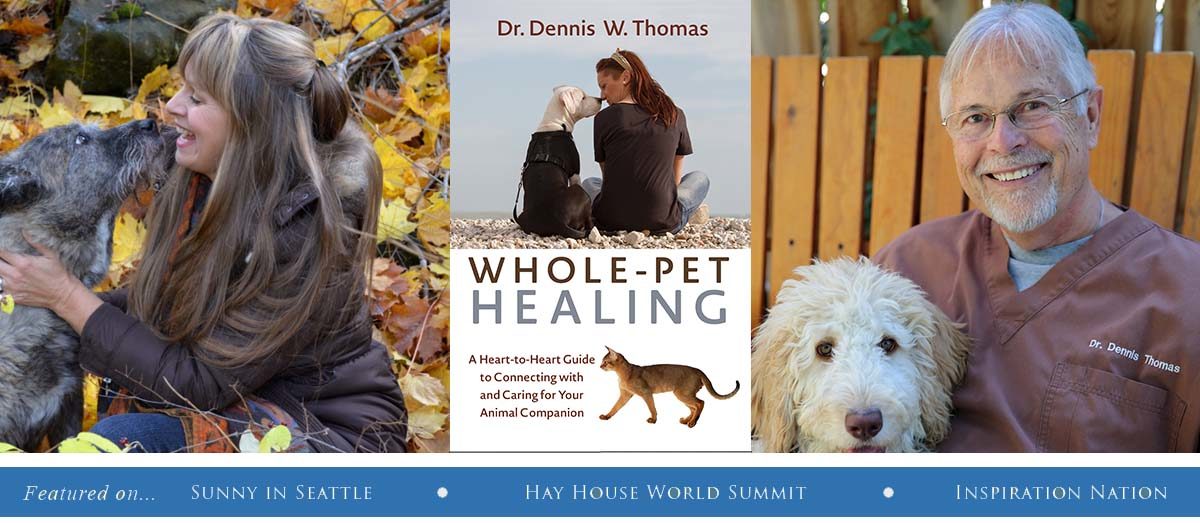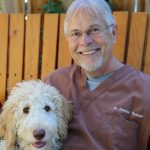In my previous blog, I discussed the primary myth that you have been told about dental disease in dogs and cats. I also discussed what actually causes dental disease in dogs and cats and why dry kibble actually potentiates dental disease instead of preventing the problem. I went into detail the importance of feeding the correct diet and the implications for dental disease and what I recommend as a proactive approach to prevent dental disease.
In this blog, I will focus primarily on older pets with a history of dental disease and the problem with our routine protocols in vet medicine. It is a bad case of the old, caught between the rock and hard place.
Imagine that you have a pet that has heart disease, kidney disease or some other chronic disease that has an infected mouth with a lot of rotten teeth. It shouldn’t be too hard to imagine, as it happens in most pets and in vet clinics we see it every day. Should we ignore the dental disease knowing that it is a problem of its own and likely linked to other chronic diseases or should we take the chance to put the senior pet down under general anesthesia for an extended period of time, knowing that we might make the other underlying disease(s) worse, or even lose the pet under anesthesia? The reason this is such a hard question to answer is that there is no right answer. We can’t predict what is going to happen, so the ultimate question is whether we take the chance or not. If you took that same pet with the same health conditions to twenty vets, most likely, ten will say that they would do the dental work while the other would say that they wouldn’t.
So, what do we do in this situation? First, we learn from our mistake. We have allowed ourselves to be forced into a reactive situation by not being proactive. But, since we are where we are, let’s look at some facts so that our intellectual, reasoning mind may give us some help.
Dental disease is bad. If you have ever had a bad tooth, you know how much pain and discomfort it can cause. You can’t even sleep soundly with a bad tooth. Dogs and cats have the same level of pain perception as we do. If your pet has bad teeth, there is pain and discomfort, much like yours. If you don’t believe it, watch your pet eat. She will likely do the minimal amount of chewing and often no chewing at all to avoid hurting the painful teeth. If I have a senior cat that comes to my office because it is vomiting whole food shortly after eating, it is likely due to dental disease and bad teeth.
Dental disease is also a source for a constant showering of bacteria from the infected mouth into the general system. Bacteria from the mouth is picked up by the blood stream and goes directly to the heart. If the bacterial population is high enough, they will often attach to the valves of the heart and set up colonies, often leading to heart infection, heart dysfunction and further dispersion to other organs such as the kidney and liver. Many dogs and cats have chronic kidney disease as a result of a chronically infected mouth.
Chronic infection in the mouth, along with chronic inflammation and poor immune system (from other diseases, leaky gut, etc) are the potential for cancer of the mouth, such as squamous cell carcinoma, a common problem found in cats. Bone cancer in the jaw bone in dogs is another common problem associated with chronic inflammation and poor immune function. Needless to say, advanced dental disease is a major problem.
Of course, the other side of the discussion regards the potential problems associated with putting the pet down under a general anesthesia in order to do the dental work. This is always a concern, especially with senior pets that have concurrent chronic diseases. There is absolutely no guarantee, with all of the vet’s recommendations, that your pet will survive the procedure. If you don’t believe me, ask your vet for a guarantee.
The good news is that while dental health in pets has been evolving, so has our general anesthetics and anesthetic protocols. Most vets use the same general anesthetics that are used in people and they are very safe, easily administered and easily controlled. The old days of injectable induction drugs and poor gas anesthesia were the cause for many anesthetic-related deaths. Not only have anesthetics improved, but our protocols have as well. We have blood analysis to give in the moment evaluation for vital organ function that will be affected during anesthesia. We give IV fluid support to counter the reduced blood pressure that happens during general anesthesia. Most states require by law that an accredited veterinary technician will be monitoring the anesthesia during the procedure so that any problems will be picked up immediately and alterations may be made before it is too late. Our equipment has greatly improved. Modern dental equipment allow for quick and effective work to be done for both cleaning and extractions. Dental radiography allows us to pinpoint problems which reduces time and effort for correcting problems. Needless to say that all of these factors will likely improve the chances that your pet will be fine during and after the procedure. But, as I mentioned, you can never guarantee anything.
This is why careful consideration be given by both yourself as the pet caretaker and as the vet with a history of your pet’s overall health. However, there is one other factor that you should consider. You have a connection to your pet that your vet doesn’t have. I have discussed this many times in previous blogs. You have an inherent guiding system in your being that is often forgotten or overlooked. The imperative word is “guiding.”
Our intellectual and reasoning mind will help us assess both choices, but it will not guide you. It works on past history, experience and memory and nothing more. It cannot predict the future. You must turn to your intuitive mind in order to do this. Your intuitive mind can only be accessed when the intellectual mind is turned off. Your mind cannot do both at the same time. I highly recommend that you train yourself to get quiet and focus your attention on the intuitive mind as it comes into play. It will not come with words, but with feelings.
Take some time each day, either early morning or just before going to sleep, and quieten the mind. Source energy knows your intention and your confusion. Just stay quiet and allow your feelings to come to the surface. They will be your guiding source. It will not come in the form of fearful feelings but in the form of a direction and not as a choice. You will know which direction you are being led and you will move along that pathway in complete confidence that you are moving correctly. Your higher being and your pet’s higher being come from the same source energy and at that level of consciousness there is no separation, only unification. What you do is what your pet wants you to do and what both of your higher selves want you to do. Don’t forget this vital approach.
Side note: There are many natural supplements and remedies that are currently being used by holistic vets for dental health. Calendula is a supplement from the flower that can be used in a gel form that has been proven effective for gingivitis and bacterial infection in the mouth. Homeopathic remedies have been also used: Calcarea Phosphorica 6X and Calcarea Fluorica 6X have been used. Place 1 tablet of each remedy into a small amount of spring water and give once a day for one month. LEBA 111 is a commercial product that has received good reviews by pet caretakers who have used this product. It can be purchased on Amazon.com.

